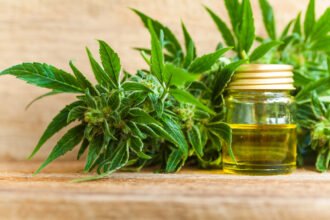By Clifton Castleman, WEMT
*Adapted from the Sierra Club’s Annual One Day Hike
By Clifton Castleman, WEMT
*Adapted from the Sierra Club’s Annual One Day Hike
Blisters are the number one foot ailment encountered by hikers – and they can turn the greatest hike into the most painful one. Blisters can be avoided by proper foot training; having the correct footwear and socks, and by early detection of possible problems. To help protect your feet, know the causes of blisters, how to prevent and treat them.
What Causes Friction Blisters?
HEAT
Heat is the number one reason for getting blisters. The heat responsible for causing blisters is mostly caused by the friction between your skin and the inner of your shoe or boot. Sand and gravel in your boot can increase friction which is why they also cause blisters.
MOISTURE
Moist or wet feet from sweat or water are more susceptible to blisters as moisture softens your skin.
LOCALIZED AREA
When there a small portion of your foot or ankle rubs against a part of your shoe, your foot first responds by getting red and hot. This is called a Hot Spot. While not a blister, these are the body’s first sign of discomfort. If a hot spot is left untreated, the result is a painful blister which is either filled with clear mucus (the body’s own coolant fluid) or blood (blood blisters).
How to Prevent Friction Blisters
Preventing blisters boils down to countering the factors that cause them. In general, keeping your feet cool, dry, and free of sand will do the trick. Here are some tips on how to prevent blisters:
- First of all, select footwear with a good fit that does not chafe your feet or have painful pressure points. Choose watertight but breathable footwear that gives the proper ventilation which will get rid of excess moisture. Look for fully gusseted tongs that keep sand and gravel outside of your boots.
- Give your feet ample rest. If you feel that your feet might be moist or overheated, it might be wise to make some alterations to your hiking rhythm and take a longer rest where you take off your boots and socks. If you do so, you might want to change socks and dry the ones you had on. Having two pairs of socks used alternately is always a good idea to prevent Blisters.
- If you decide to cool your feet in water (such as a stream), make sure to dry them off well before putting your socks and boots back on. When and if conditions allow, take off your boots and socks and walk with hiking sandals during breaks.
Early Treatment of Friction Blisters
Blisters develop over a period of time and often you can already feel one coming up. Early detection and treatment is the key to preventing full grown blisters. If you feel a sore place on your foot or irritation, do the following:
- Take off your boots and hiking socks immediately and remove any sand or gravel from your feet.
- Let your feet dry and cool down.
- Cover the sore area with the Silk Tape, band-aids, blister pads or moleskin.
After hiking, remove the moleskin, tape, etc. and let the skin recover during the night. The next morning, you can judge for yourself to apply a new cover or not for your regular walking shoes. In general, take precautions and apply a cover even if the area is only moderately irritated.
Treating Friction Blisters
You essentially have two options of treating your foot blister; and depending on whether you’re planning on continuing the hike or dropping out, may affect your course of action. If you are continuing to hike, and the blisters are at the surface and filled with fluid, you may wish take a sterilized needle and pierce the blister in order to drain it.
Be sure to pierce the blister at the lowest point of gravity (the base of the blister) and gently roll your thumb from the top, down, forcing out the liquid like a tube of toothpaste. If the affected skin is still intact then do not remove it or tear it off. Instead, cover the drained blister with moleskin or better yet, one of the 2nd Skin Blister Pads, provided at the first aid tents at each support station.
If the affected area is ruptured and the blister is torn, be sure to clean it with an antiseptic such as triple-antibiotic ointment or bacitracin (both provided at the first aid stations). Keep the area clean in order to prevent infection.
If the blisters are buried deep under the surface of your skin and does not hold a lot of liquid then do NOT try to puncture them. Instead, just cover them with one of the items listed above.
MYTH: Duct Tape Works Well
Duct tape sticks well to itself and has absolutely NO give or elasticity to it whatsoever. This being said, many ODH hikers tape their ankles and the balls of their feet with duct tape, only to have it come loose while hiking, creating a HUGE and painful blister due to the fact that duct tape does not stick to virtually anything when wet – especially to skin when there’s a layer of sweat between the tape and skin.
Another common thing that we see unfortunately, are those folks who tape their feet and ankles circumferentially (meaning all the way around their feet). Again, the tape sticks well to itself but has NO give. These individuals know this and intend (as many have told us) to change the duct tape at every station. Here’s the problem with that: As you hike, especially for long distances, you get what is called “peripheral edema”, where your hands and feet start to swell.
By wrapping your feet and/or ankles with tape, you create compartment syndrome or essentially an unintentional tourniquet around that part of the body, slowly killing the tissue inside. When these participants took off their duct tape, their feet literally swelled up within seconds (like balloons) and not only did it hurt so much that they couldn’t put any weight on their feet and had to drop out of the race and explain to their friends and families why they were unable to continue, but also their feet became literally too big for their shoes!!
These are a few basic things you should know about blisters. It is not essential that you have adequate first aid knowledge, as we have an entire team of knowledgeable medical team volunteers in place to deal with any emergency; large or small – but we certainly recommend taking a wilderness first aid course if you are like me and love to spend time in the great out-of-doors.
If you have any questions or comments, please leave them below in the comments and we’ll do our best to answer them.






